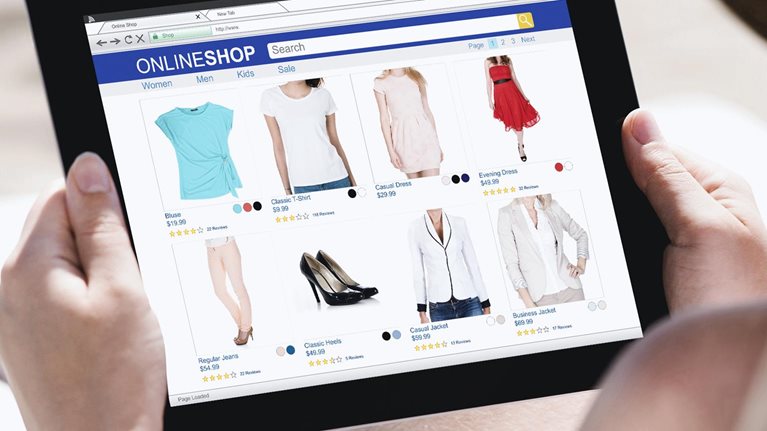Offering a compelling omnichannel experience used to be the bleeding edge of retail. Now it’s a requirement for survival. More than one-third of Americans have made omnichannel features such as buying online for in-store pickup part of their regular shopping routine since the pandemic, and nearly two-thirds of those individuals plan to continue. Younger buyers are the most enthusiastic about new ways of shopping. Most Gen Z consumers don’t even think in terms of traditional channel boundaries, our research shows, and they increasingly evaluate brands and retailers on the seamlessness of their experience.
But before retailers rush to expand their omnichannel capabilities, they need to step back and consider the underlying drivers of value for their specific business. Otherwise, with multiple approaches and technologies to choose from, and acute margin pressures, retailers can invest in the wrong thing and quickly fall into a downward spiral that can destroy value.
Omnichannel excellence requires a laser-like focus on value creation. Leaders in the field take a hard look at their strategic and customer priorities and decide who they want to be from an omnichannel perspective. And they develop an equally clear-eyed understanding of what it will take to achieve that ambition. By embedding these principles into their retail strategies, leaders can use the momentum—and urgency—of the present moment to create decisive advantage.
A lack of clarity hobbles many efforts
We find that retailers are often swayed by new technologies that sound promising, but too often don’t deliver. Many also have a murky understanding of how omnichannel creates value. Some fashion brands, for instance, have been slow to push e-commerce, given the high cost of shipping and returns, and the fear that online channels cannibalize in-store sales. Others fund ad hoc investments that yield only marginal improvements in the overall shopping experience. We see these three common issues:
- Unclear understanding of what parts of omnichannel to prioritize. Too few retailers have established alignment across their organization on the omnichannel agenda, including the long-term vision and the current status. Without strategic alignment, organizations often end up investing in a scattershot fashion, funding divergent priorities in e-commerce, store operations, supply chain, marketing, and technology.
- Focus on tech rather than on customer value. Many retailers have leaped to embrace tech-enabled, flashy innovations like smart mirrors, Bluetooth beacons, and in-store kiosks to create differentiation. But without a proper grounding in customer needs or determining how these investments will create and sustain value at scale, retailers sometimes end up with what amount to shiny objects that drain capital expenditures.
- Failure to sequence investments in line with strategy. Many retailers race to advance omnichannel initiatives without doing the critical thinking to identify the starting point and the specific capabilities needed to succeed at each step. Pressure to keep pace with competitors or eagerness to put a compelling idea into action can prompt some companies to plunge in headfirst. But without clearly sequencing the “crawl, walk, run” approach and investing in the right fundamentals, retailers often end up with fragmented investments that destroy value.
Charting your ambition
The most successful retailers let their strategic ambition and aspirational customer experience determine what omnichannel strategy to pursue. When the underlying ambition and capabilities are misaligned, retailers tend to stumble. While omnichannel has many variants, there are three primary strategies: commerce, personalization, and ecosystem (Exhibit 1).

Would you like to learn more about our Marketing & Sales Practice?
These three strategies are part of a continuum, with omnichannel ecosystems being the most advanced. Retailers can stick with one strategy, go deep, and then excel as a commerce or personalization leader, or, with the right fundamentals in place, they can move along the continuum into an ecosystem and expand into other business models over time. More importantly, each strategy has proven to be viable in creating long-term value, if executed well.
Commerce. Retailers that take this approach—both physical-first and digital-first brands—often prioritize one channel and invest in targeted cross-channel connections to support the buying experience, such as the ability to order online and return in store. At the most basic level, this model allows retailers to meet the minimum threshold for omnichannel performance. But retailers with more advanced capabilities can take it to a very different level. Best Buy, for instance, has burnished the in-store experience with curated offerings that allow customers to explore smart-home technology solutions, which they pair with free in-home advisory services. The retailer’s mobile app allows customers to “scan to shop” from catalogs and curbside, and offers the ability to buy online for pickup in-store, making it easier for consumers to move through the journey end to end, supported by 24/7 tech support from the company’s Geek Squad. These investments have paid off. Customers signed up in droves to participate in Best Buy’s Total Tech Support offer, with memberships soaring from 200,000 at launch in 2018 to two million one year later. And although Best Buy fronts the cost of its in-home advisory, they found that customers who avail themselves of it spend more and generate more profits than those who don’t. Born-digital retailers are taking a similar tack. Companies such as Warby Parker and Everlane prioritize digital, but they’ve added a physical retail presence to drive brand awareness and greater consumer convenience.
Personalization. While most retailers personalize engagement and outreach to some degree, those that pursue omnichannel personalization go far beyond rudimentary retargeting and lookalike segmentation. They shape consistently tailored interactions across channels, and they do so continuously and at scale. Sephora, for example, provides consumers with rich in-app messaging, personalized push notifications, and the ability to book in-person beauty consultations from their phones. In-store technology allows “cast members” to access a customer’s favorite items and suggest new products that align with the customer’s profile. Customers can also use scanners to match products to their specific hair color and skin type. Its Beauty Insider loyalty program taps unified customer data and links offers across email, web, and mobile to drive online and in-store purchases. Achieving this level of personalization takes significantly enhanced data-management capabilities and process integration. But they allow Sephora to capture greater value. For instance, data showed that customers who visited the retail website within 24 hours of coming to the store were three times more likely to make a purchase and the order values were 13 percent higher than for other customers.1 Knowing that online engagement was driving in-store sales helped Sephora understand where to invest. In all, Sephora reports that its omnichannel business saw record sales in 2020, and the company is planning a major expansion of its physical store footprint.
Ecosystems. This model extends the brand experience, providing consumers with an ever-growing platform of content, offers, and community-based interactions. Instead of turning to a retailer for occasional interactions, consumers make omnichannel ecosystems part of their lifestyle. It’s an always-on relationship that can pay ample dividends. Nike, for example, uses its SNKRS and Run Club apps to foster in-person meet-ups, running groups, and events. Its Training Club app delivers individual workouts and multiweek fitness programs. These investments allow Nike to create experiences that go far beyond their shoe and apparel lines and fold the brand into an individual’s day-to day-routines. Omni ecosystems like these also help retailers expand into adjacent business models. For example, Starbucks’ more-than decade-long investment in mobile ordering, payments, rewards, and personalized experiences has yielded more than $1 billion in prepaid customer mobile deposits—a deposit base that exceeds the level of many banks. Those cash reserves give Starbucks a foundation to move into new areas that can broaden and enrich the experience it offers its customers. For example, the company issued a unique licensing agreement for its industry-leading software to Brightloom, a company in which Starbucks now has an equity stake that increases in value as other retailers and brands benefit from its long-term focus on enabling omnichannel technology platforms.

Redefine the omnichannel approach: Focus on what truly matters
How to choose
Top-performing retailers align on a north star based on their strategic and customer goals, then set their omnichannel course accordingly. A mass apparel retailer, for example, knew it needed to both expand its e-commerce capabilities and revitalize the in-store experience. But the commerce model wouldn’t give them enough advantage, since peers in the same hotly contested space would be racing to acquire the same capabilities. Additionally, the ecosystem would be overreach, since data revealed that what customers really wanted were richly tailored experiences. The personalization model was most likely to appeal to the company’s core audience and create more durable relationships—benefits that would provide more sustainable differentiation over the ensuing two to three years.
As this retailer demonstrates, figuring out which version of omnichannel to embrace requires looking beyond the current horizon, reflecting on the company’s mission, and identifying where the experience can truly serve to differentiate an organization from its competition. Customer expectations and brand positioning matter. Many retailers want to offer personalized experiences; indeed, they’re becoming table stakes for some brands. But personalization can be less relevant to brands where accessibility and convenience are more important to the customer. Similarly, an ecosystem model featuring extensive content, partnership, and community interactions might generate more value for vertically integrated players than it would, say, for a convenience store. Moreover, when retailers try to leap to the next level without establishing adequate foundational capabilities, they often fail.
What does your ambition entail?
Each omnichannel model has certain foundational elements that make it work (Exhibit 2). For example, in personalization, companies that want to succeed must have integrated cross-channel data; flexible site and app infrastructure; a tech stack that enables personalization; omnichannel inventory-fulfillment capabilities; and cross-functional teams that personalize key touchpoints across the value chain.

These are the core requirements that give retailers the right to compete in a given space. In addition, retailers should consider the handful of additional capabilities that can help them stand out from their peers and deliver exceptional value, such as a compelling in-app feature for loyalists. Understanding both what is core and what can give them leadership allows retailers to place their bets more strategically, giving management the clarity needed to ensure buy-in and alignment on the agenda.
What is your starting point?
Companies need to take a hard look at their existing resources, market position, and customer relationships, then align on a starting point and an ambition that is both realistic and a value driver for the business. The apparel retailer mentioned earlier, for instance, recognized that although its sights were set on omnichannel personalization, its customer data, content management, and mobile app capabilities were not yet sufficient to reach the objective. The company set a goal to achieve its ambition within three years, focusing first on reaching competitive parity in the commerce model, then acquiring enhanced personalization capabilities to give customers a reason to invest in the brand relationship. It didn’t need to master every commerce skillset to advance, but it had to shore up some key dimensions, including cross-channel metrics, a tech platform to house relevant data, a system to improve inventory visibility, and the onboarding of digital-native and technology talent.
Leadership also decided what not to fund going forward. For example, the company recognized that the “store of the future” improvements they were financing before the pandemic were no longer so important in the near term. In our experience, most companies can advance a maximum of two to three omnichannel initiatives concurrently. Having sufficient confidence in the omnichannel vision to take things off the table and deprioritize previous initiatives is imperative.
Mastering the basics can allow leaders to apply their insights in more ways—with the learning and value compounding over time (see sidebar, “The most important omnichannel decisions to get right”).
Retailers must become expert at anticipating from one season to the next what products and services will excite consumers. Now they have to bring that same sensibility to omnichannel. Those that set a clear ambition with a clear path to value will not only de-risk the present but will secure their future. Leaders must get on that path quickly. Those who are ready to start should think through the following questions:
- Where are the greatest value pools for omnichannel within our business, and what is the fact base to help us inform and clarify choices? How can we size the value at stake?
- Who do we need to convene within our organization to align on defining our starting point and our “north star” ambition? Where do we agree or dissent?
- Which initiatives and corresponding capabilities should we prioritize or deprioritize over the next 12 months?
- In three years, what do we want to say we have achieved within omnichannel? How would that position our company internally and relative to our competitors?


